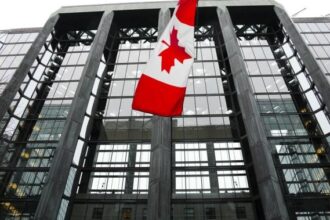The glossy Instagram posts rarely show the bank statements. As urban-dwelling millennials increasingly navigate adulthood solo, many are discovering a harsh financial reality that rarely makes it into the cultural conversation: being single costs significantly more than anticipated, and the numbers tell a sobering story.
According to recent economic analyses, singles now face a “solo tax” that can exceed $10,000 annually when accounting for housing, utilities, groceries, and healthcare costs that cannot be divided with a partner. This financial burden comes at a time when 36% of millennials aged 25-34 report living alone—the highest percentage in recorded history.
“Nobody prepared us for how expensive independence would be,” says financial planner Mia Rodriguez. “When millennials graduated into a recession and faced stagnant wages, the assumption was they’d follow traditional paths of cost-sharing through marriage or partnerships. Instead, many are choosing independence despite the premium.”
Housing represents the most substantial financial challenge. In Vancouver, where the average one-bedroom apartment now commands over $2,400 monthly, singles must allocate approximately 47% of the median salary toward housing alone. Compare this to coupled households, where the same space costs each person roughly 24% of their income.
The ripple effects extend beyond rent. Solo dwellers pay approximately 80% more per meal when cooking for one versus two, according to consumer research from Market Basket Analysis. Bulk purchases become impractical, and food waste increases without someone to share perishables.
Digital content creator Marcus Lee, 31, recently tracked his expenses over six months and was stunned by the results. “I’m spending nearly double what my married friends do on basics like internet, streaming services, and utilities. Everything from Costco memberships to vacation accommodations is designed for couples or families,” he explains.
The financial industry has been slow to acknowledge this demographic shift. Most financial advice still presumes the eventual consolidation of households, despite data from CO24 Business showing that 28% of millennials report no intention to marry or cohabitate.
Healthcare presents another significant expense. Single individuals lack the safety net of a partner’s employer-sponsored insurance and must bear the full burden of out-of-pocket medical expenses. A recent study in the Journal of Economic Perspectives found that singles spend 39% more on healthcare over their lifetimes than their married counterparts.
Economic systems designed around the nuclear family model create additional obstacles. Tax benefits favor married couples, retirement planning assumes dual incomes, and even social activities often come with a “plus one” discount that singles cannot access.
“We’re seeing clients increasingly frustrated by financial structures that penalize independence,” notes economist Taylor Chen. “The millennial who chooses to remain single isn’t making just a lifestyle choice—they’re accepting a significant financial burden that compounds over decades.”
The long-term implications are concerning. Retirement planning becomes particularly challenging without a second income or the ability to share fixed costs. Financial advisors estimate singles need to save 30-40% more for retirement than their coupled peers to maintain equivalent living standards.
As this generation approaches middle age, the conversation around singlehood must expand beyond dating apps and solo travel to address the very real economic challenges. Will financial institutions develop products specifically for long-term singles? Can urban planning create more affordable single-occupancy housing options? These questions require urgent attention as demographic patterns continue to shift away from traditional household formations.
The millennial generation didn’t create this financial disparity, but they’re certainly paying for it—one unshared bill at a time.


















